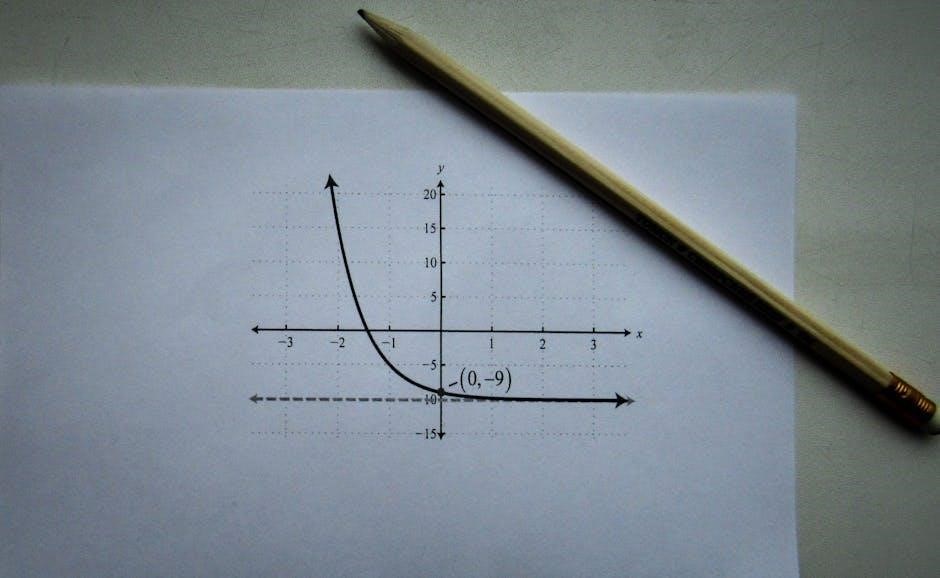Meiosis Worksheet PDF: A Comprehensive Plan
Meiosis worksheets, often in PDF format, are invaluable tools for educators and students alike. These resources facilitate understanding of complex cellular division processes.
They cover stages like prophase I, metaphase I, and anaphase II, with labeling exercises and phase identification activities.
Key features include practice questions, diagrams, and answer keys for self-assessment, aiding comprehension of homologous chromosomes and genetic variation.
Meiosis worksheets, frequently available as PDF downloads, serve as foundational learning instruments in biology education. These resources are specifically designed to reinforce comprehension of meiosis, the specialized cell division process crucial for sexual reproduction and genetic diversity.
Typically, these worksheets present a variety of exercises, including diagram labeling of meiosis phases – prophase I, metaphase I, anaphase I, telophase I, and the subsequent stages of Meiosis II. Students actively engage with identifying stages, ordering events, and understanding the behavior of chromosomes.
The PDF format ensures accessibility and ease of distribution, allowing for both classroom use and remote learning. Many worksheets incorporate answer keys, promoting self-assessment and independent study. They are a vital component in mastering this complex biological process, offering a structured approach to learning and retention.
The Importance of Meiosis in Biology Education
Understanding meiosis is paramount in biology education, as it underpins concepts like heredity, genetic variation, and evolution. Meiosis worksheets, often in PDF format, are instrumental in solidifying this understanding. They move beyond rote memorization, encouraging students to actively apply their knowledge through practical exercises.
These worksheets facilitate a deeper grasp of chromosome behavior, crossing over, and the distinction between haploid and diploid cells. By labeling diagrams and answering targeted questions, students develop critical thinking skills. The PDF format allows for convenient access and repeated practice.
Furthermore, worksheets prepare students for more advanced topics in genetics and molecular biology. Mastering meiosis provides a crucial foundation for understanding genetic diseases, inheritance patterns, and the mechanisms driving evolutionary change. Utilizing answer keys promotes independent learning and reinforces correct concepts.
Types of Meiosis Worksheets Available
A diverse range of meiosis worksheets, frequently available as PDF downloads, caters to varied learning styles and educational levels. Basic worksheets focus on identifying phases – prophase I, metaphase II, etc. – through diagram labeling. More advanced options delve into concepts like crossing over and independent assortment.
Some worksheets present scenarios requiring students to predict genetic outcomes, fostering analytical skills. Others utilize fill-in-the-blank exercises to reinforce key terminology. Comparative charts highlighting haploid versus diploid cells are also common.
PDF formats offer flexibility, allowing teachers to easily print and distribute materials. Online interactive worksheets provide immediate feedback. Practice worksheets with answer keys are readily accessible for self-assessment. Custom worksheets, tailored to specific curriculum needs, can also be created or sourced from educational platforms.

Understanding the Stages of Meiosis
Meiosis worksheets, often PDFs, visually break down each stage – prophase I, metaphase I, anaphase II, and telophase II – for effective learning.
Prophase I: Detailed Breakdown & Worksheet Focus
Prophase I, the initial stage of meiosis I, is a complex process heavily emphasized in meiosis worksheets, frequently delivered as PDFs. These worksheets focus on key events like chromosome pairing – synapsis – and the crucial exchange of genetic material through crossing over.
Worksheet exercises often require students to label diagrams illustrating these processes, identifying homologous chromosomes and chiasmata (the points where crossing over occurs).
Many PDF worksheets present scenarios asking students to predict the outcomes of crossing over on genetic diversity.
Furthermore, they assess understanding of spindle formation and nuclear envelope breakdown. Some worksheets include matching exercises linking terms like ‘tetrad’ and ‘synapsis’ to their definitions.
Answer keys provide detailed explanations, reinforcing the significance of Prophase I in generating genetic variation.
Students practice sketching the stage and describing the events.
Metaphase I: Alignment and Key Features for Worksheets
Metaphase I worksheets, commonly found in PDF format, concentrate on the unique alignment of homologous chromosome pairs at the metaphase plate. Unlike mitosis, it’s the pairs that align, not individual chromosomes, a critical distinction emphasized in these resources.
Worksheet activities frequently involve labeling diagrams, requiring students to identify homologous chromosomes and demonstrate understanding of independent assortment – the random orientation of these pairs.
PDF worksheets often present questions probing the impact of independent assortment on genetic variation in gametes.
Exercises may ask students to predict the number of possible chromosome combinations based on the number of chromosome pairs.
Answer keys clarify the difference between metaphase I and metaphase in mitosis, reinforcing the unique characteristics of meiotic division. Students practice identifying the correct alignment and explaining its significance.
Diagrams are often included for students to label.
Anaphase I: Separation of Homologous Chromosomes ― Worksheet Exercises
Anaphase I worksheets, typically available as PDF downloads, focus on the separation of homologous chromosome pairs, a defining event in meiosis I. These resources emphasize that sister chromatids remain attached at the centromere during this phase – a common point of confusion addressed in worksheet exercises.
Worksheet activities often involve tracing the movement of chromosomes on diagrams, highlighting the reduction in chromosome number from diploid to haploid.
PDF worksheets frequently include fill-in-the-blank questions testing understanding of what is being separated (homologous chromosomes, not sister chromatids).
Students practice identifying the correct depiction of anaphase I versus anaphase in mitosis.
Answer keys provide clear visual guidance and explanations, correcting misconceptions about chromosome behavior. Exercises may ask students to predict the chromosome content of daughter cells after anaphase I.
Diagrams are often included for students to label.
Telophase I & Cytokinesis: Formation of Haploid Cells ― Worksheet Identification
Telophase I and Cytokinesis worksheets, commonly found in PDF format, concentrate on recognizing the formation of two haploid cells. These resources emphasize that, unlike mitosis, the chromosomes are not identical at this stage due to crossing over.
Worksheet exercises frequently involve identifying diagrams depicting Telophase I, distinguishing them from other phases of meiosis. Students practice recognizing the nuclear envelope reforming around chromosome sets.
PDF worksheets often include questions about chromosome number – confirming understanding of the reduction from diploid to haploid.
Cytokinesis, the division of the cytoplasm, is also a key identification point.
Answer keys provide visual confirmation of correct phase identification and clarify the significance of haploid cell formation. Students may be asked to compare and contrast Telophase I with Telophase in mitosis.
Labeling exercises are common, focusing on key structures.

Meiosis II: A Second Division
Meiosis II PDF worksheets focus on the second cell division, mirroring mitosis. Exercises involve identifying prophase II through telophase II stages, reinforcing understanding.
Prophase II: Preparation for the Second Division ― Worksheet Questions
Meiosis II worksheets dedicated to Prophase II commonly present questions designed to assess student comprehension of this preparatory stage. These questions often ask students to describe the key events occurring within the cell during Prophase II, such as the reformation of the spindle apparatus.
Worksheet exercises frequently include prompts requiring students to differentiate Prophase II from Prophase I, highlighting the absence of homologous chromosome pairing and crossing over. Students may be asked to explain the role of the newly formed spindle fibers in preparing the cell for subsequent stages.
Diagram-based questions are prevalent, challenging students to label cellular structures like the spindle poles and chromosomes. Multiple-choice questions test understanding of the overall purpose of Prophase II – to further divide the genetic material. Some worksheets incorporate true/false statements to evaluate precise knowledge of the stage’s characteristics. Key concepts addressed include chromosome condensation and the movement towards the metaphase plate.
Metaphase II: Chromosome Alignment in Meiosis II ― Worksheet Labeling
Meiosis II worksheets focusing on Metaphase II heavily utilize labeling exercises to reinforce understanding of chromosome alignment. These worksheets typically present diagrams of cells undergoing Metaphase II, requiring students to accurately identify key structures.
Common labeling tasks include identifying sister chromatids, spindle fibers, centromeres, and the metaphase plate. Students are often asked to distinguish between the arrangement of chromosomes in Metaphase I versus Metaphase II, noting the difference in homologous pairing.
Worksheets may also include questions prompting students to explain the significance of chromosome alignment for accurate segregation in the following phases. Diagram-based activities often require students to trace the path of spindle fibers connecting to the centromeres. Key objectives include mastering the visual representation of Metaphase II and understanding its role in ensuring proper chromosome distribution.
Answer keys are crucial for self-assessment.
Anaphase II: Sister Chromatid Separation ― Worksheet Diagrams
Meiosis II worksheets dedicated to Anaphase II predominantly employ diagram-based activities to illustrate sister chromatid separation. These visuals depict cells in Anaphase II, challenging students to demonstrate their comprehension of the process through annotation and completion.
Typical exercises involve tracing the movement of sister chromatids towards opposite poles of the cell, guided by the shortening spindle fibers. Students are often asked to label the centromeres as they divide and the resulting individual chromosomes.
Worksheets may present “before and after” diagrams, requiring students to illustrate the change in chromosome number and structure during Anaphase II. Key learning objectives include visualizing the separation of sister chromatids and understanding its contribution to genetic diversity.
Diagrams often necessitate identifying the roles of microtubules and motor proteins. Answer keys provide essential feedback for accurate understanding and skill development.
Telophase II & Cytokinesis: Final Daughter Cells ― Worksheet Analysis
Meiosis II worksheets focusing on Telophase II and Cytokinesis emphasize analytical skills through comparative cell studies. Students analyze diagrams depicting cells undergoing these final stages, identifying key features like nuclear envelope reformation and chromosome decondensation.
Exercises commonly involve contrasting the resulting daughter cells with the original parent cell, highlighting the reduction in chromosome number from diploid to haploid. Worksheets often present scenarios requiring students to predict the genetic makeup of these daughter cells.
Analysis questions assess understanding of cytokinesis – the physical division of the cytoplasm – and its role in creating four genetically distinct haploid cells. Key concepts include recognizing the completion of meiosis and the preparation for gamete formation.
Answer keys facilitate self-assessment and reinforce the understanding of these crucial final steps.

Key Concepts Addressed in Meiosis Worksheets
Meiosis worksheets thoroughly explore homologous chromosomes, crossing over, haploid/diploid distinctions, and genetic variation’s evolutionary impact.
PDF formats reinforce these key biological principles through targeted exercises.
Homologous Chromosomes & Crossing Over ‒ Worksheet Applications
Meiosis worksheets dedicate significant attention to understanding homologous chromosomes and the crucial process of crossing over, often visualized through detailed diagrams in PDF format. These exercises frequently require students to identify homologous pairs within karyotypes and differentiate them from sister chromatids.
Worksheet applications commonly involve scenarios where students predict the outcomes of crossing over events, analyzing how genetic recombination contributes to increased genetic diversity. Students may label diagrams illustrating chiasmata formation – the physical manifestation of crossing over – and explain its significance in generating novel allele combinations.
Furthermore, worksheets often present problems requiring students to trace the inheritance of genes across generations, demonstrating how crossing over shuffles alleles and impacts phenotypic ratios. Key questions assess understanding of how crossing over differs from independent assortment and its role in evolution. Answer keys provide detailed explanations, reinforcing these complex concepts.
Haploid vs. Diploid Cells ― Worksheet Comparisons
Meiosis worksheets extensively utilize comparative exercises to solidify understanding of haploid and diploid cells, frequently presented within accessible PDF documents. These comparisons often begin with defining ploidy levels – 2n for diploid and n for haploid – and require students to identify the ploidy of cells at various stages of the cell cycle and meiosis.
Worksheet applications commonly involve tables where students must differentiate characteristics like chromosome number, origin of genetic material, and the types of cells (somatic vs. gametes) associated with each ploidy level. Diagrams illustrating the reduction division in meiosis are often included, prompting students to track chromosome number changes.

Furthermore, worksheets present scenarios requiring students to determine whether a cell is haploid or diploid based on its genetic content. Key questions assess understanding of how meiosis generates haploid gametes from diploid cells, and answer keys provide clear explanations of these fundamental concepts.
Genetic Variation & its Role in Evolution ‒ Worksheet Scenarios
Meiosis worksheets, often available as PDF downloads, heavily emphasize the link between genetic variation generated during meiosis and its crucial role in evolutionary processes. These resources move beyond basic definitions, presenting students with realistic scenarios to analyze.
Worksheet exercises frequently involve analyzing the impact of crossing over and independent assortment on allele combinations in gametes. Students are tasked with predicting the genetic diversity within offspring populations based on different parental genotypes.

Key components include problem sets exploring how genetic variation provides the raw material for natural selection. Scenarios might depict populations facing environmental changes, requiring students to explain how pre-existing genetic diversity influences survival and adaptation. Answer keys detail the evolutionary advantages conferred by increased genetic variation, reinforcing the connection between meiosis and long-term species survival.

Utilizing Meiosis Worksheet Answer Keys
Meiosis worksheet PDFs often include answer keys, vital for student self-assessment and identifying areas needing improvement. They promote independent learning and reinforce understanding of complex concepts.
Benefits of Using Answer Keys for Self-Assessment

Meiosis worksheet PDFs with accompanying answer keys empower students to take ownership of their learning journey. Immediate feedback allows for pinpointing specific misconceptions regarding stages like prophase I or anaphase II.
This self-directed approach fosters a deeper understanding than simply receiving a grade. Students can actively analyze their errors, revisiting concepts like homologous chromosome separation or crossing over until mastery is achieved.
Answer keys reduce reliance on instructors for every question, promoting independent study habits. They also build confidence as students verify their correct answers, reinforcing positive learning experiences.
Furthermore, utilizing answer keys encourages a growth mindset, framing mistakes as opportunities for learning rather than failures. This is particularly crucial when grappling with the intricacies of meiosis and its impact on genetic variation.
Ultimately, self-assessment with PDF worksheet answer keys transforms learning from a passive reception of information to an active, engaging process.
Common Mistakes Students Make & How Worksheets Address Them
Meiosis worksheet PDFs strategically address frequent student errors. A common mistake is confusing meiosis I and meiosis II, often misidentifying phases or chromosome behavior. Worksheets with clear diagrams and labeling exercises help differentiate these stages.

Students often struggle with the concept of homologous chromosomes versus sister chromatids, leading to errors in anaphase I. Targeted questions and visual representations within the PDFs reinforce this distinction.
Misunderstanding crossing over and its role in genetic variation is another hurdle. Worksheets present scenarios and applications, prompting students to analyze its impact.
Furthermore, worksheets frequently include questions about haploid versus diploid cells, solidifying this fundamental concept. By repeatedly applying these concepts through practice, students overcome these common challenges.
The PDF format allows for focused practice, minimizing distractions and maximizing learning efficiency, ultimately improving comprehension of meiosis.
Finding Reliable Meiosis Worksheet Answer Keys Online
Locating trustworthy meiosis worksheet PDF answer keys requires careful navigation. Numerous educational websites offer free resources, but verifying accuracy is crucial. Reputable sources often include teacher-created materials or those aligned with established curricula.
Sites like Teachers Pay Teachers and educational blogs frequently host answer keys alongside the worksheets themselves. However, cross-referencing with textbook solutions or reliable biology resources is recommended.
Beware of websites with unclear origins or excessive advertisements, as these may contain inaccurate information. Look for answer keys provided by verified educators or institutions.
Utilizing search terms like “meiosis worksheet answer key PDF” combined with the worksheet’s source can narrow the search. Always prioritize resources that demonstrate a commitment to scientific accuracy and pedagogical soundness;
Remember, answer keys are tools for self-assessment; understanding the process is more important than simply obtaining the correct answers.

Resources for Meiosis Worksheets (PDF Format)
Numerous websites provide free, printable meiosis worksheet PDFs. Paid resources often offer more detailed answer keys and supplementary materials. Custom worksheets can also be created.
Popular Websites Offering Free Printable Worksheets
Several online platforms readily offer free meiosis worksheets in PDF format, proving invaluable for educators and students seeking accessible learning resources. Biology Corner stands out, providing a diverse collection of worksheets covering various aspects of meiosis, including labeling diagrams and understanding key phases.
Another excellent resource is K12Worksheets.com, which features a range of meiosis-related activities suitable for different grade levels. These worksheets often include matching exercises, fill-in-the-blanks, and multiple-choice questions to reinforce learning. Additionally, ScienceSpot offers comprehensive materials, including guided notes and practice quizzes, complementing the worksheets effectively.
Teachers Pay Teachers, while containing both free and paid resources, hosts numerous user-created meiosis worksheets. These often provide unique perspectives and cater to specific learning objectives. Remember to preview the content and answer key before assigning to ensure accuracy and alignment with your curriculum. These sites provide a wealth of options for reinforcing meiosis concepts;
Paid Resources & Their Advantages
While numerous free meiosis worksheet PDFs are available, investing in paid resources often unlocks significant advantages for educators. Platforms like Teachers Pay Teachers and specialized educational websites offer meticulously crafted materials developed by experienced biology teachers.
These premium resources frequently include comprehensive answer keys, detailed explanations, and differentiated worksheets catering to diverse learning needs. They often go beyond basic identification, incorporating higher-order thinking questions and real-world applications of meiosis.
Paid worksheets may also feature visually appealing diagrams, interactive activities, and assessments aligned with specific curriculum standards. Furthermore, purchasing supports the creators, encouraging the development of more high-quality educational content. Bundled resources, encompassing worksheets, presentations, and quizzes, provide a complete meiosis learning package, saving educators valuable preparation time and ensuring thorough student understanding.
Creating Custom Meiosis Worksheets
Developing custom meiosis worksheet PDFs allows educators to precisely target specific learning objectives and address unique student needs. Utilizing software like Microsoft Word, Google Docs, or specialized worksheet generators provides flexibility in design and content.
Begin by outlining key concepts – stages of meiosis, homologous chromosomes, crossing over – and then craft questions that assess understanding at various cognitive levels. Incorporate diagrams for labeling, sequencing activities, and problem-solving scenarios.
Consider including open-ended questions to encourage critical thinking and application of knowledge. To ensure accuracy, meticulously create an answer key. Converting the finished worksheet to PDF format preserves formatting and facilitates easy distribution. This personalized approach ensures the worksheet directly supports classroom instruction and reinforces student comprehension of this complex biological process.



Be the first to reply